Forks: what is it, history and description
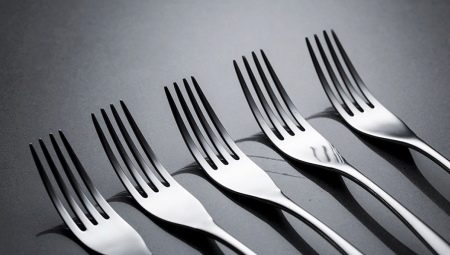
One of the most popular cutlery is the fork. It is a handle with several teeth extending from it. The fork is the most versatile, since due to its shape it is used for almost all types of dishes. However, it should be noted that there are several types of table forks, which we will take a closer look at below. First you need to figure out what this cutlery is, and who invented it.

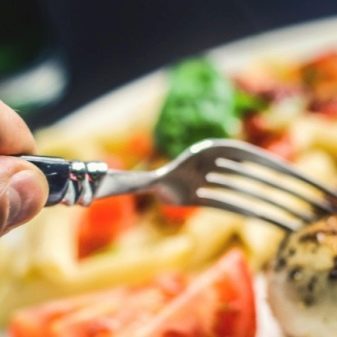
History of appearance
First, let's trace the etymology of the word "fork". This word is rooted in the Latin language, where the consonant with it - "fulka" is translated as "garden pitchfork". Today, an everyday meal is almost impossible to imagine without a fork, but several centuries ago people had no idea about this device, using only knives and spoons in everyday life. The first mentions of cutlery, similar to forks, go back to the times of Ancient Greece, where rather large devices with two sharpened teeth were used to cut meat at feasts and put it on plates.
Looking at old paintings depicting high society of the Renaissance, we see high-ranking ladies and gentlemen with their ostentatious restraint and grandeur. And it is difficult for us to imagine how they eat meat and fish dishes with their hands at feasts. Then, according to the rules of etiquette, the meat was taken with three fingers, which were then rinsed in a small bowl of water.
For a time it was popular to use gloves when eating meat, which were thrown away after eating. Interestingly, forks had already appeared at that time.

Around the 7th century AD, a fork, as a symbol of prosperity and power of the royal family, was used by its members at ceremonial gatherings in Asia Minor. This cutlery came to Byzantium sometime in the 10th century, and was also used exclusively by people of noble birth. According to one version, the Byzantine princess, who married the head of the Venetian Republic, brought the fork to Europe in the 11th century.
Although at first the unusual eating habits were alien to Italians, however, by the 16th century, it spread throughout Italy, and by the beginning of the 18th century, the fork had spread in many European countries.
According to another existing version, the fork was invented by the princess of Byzantine origin Maria of Iverskaya in 1072. She considered it beneath her dignity to eat meat and fish with her hands, therefore, according to her plan, a one-of-a-kind golden fork was created, consisting of a handle with two teeth. Such a device was not particularly practical, since it did not make it possible to normally scoop food. Initially, he acted only as a kind of symbol of the power and authority of the ruler.


For a modern person, a fork is an irreplaceable cutlery, but the question remains why for a long time human society did not accept it. From time immemorial, people used their hands to eat fish and meat dishes. A fork or a device similar to it, in ancient Greece and Rome, was used only for laying out pieces of meat on plates, while eating with your hands. This way of eating meat is firmly rooted in human society.
In the process of the spread of the Christian religion, the problem of using a fork as a cutlery was further aggravated. This was due to the rejection and prohibition of the church of the pagan religion and any symbols associated with it. One of these was considered a fork, as it resembled Poseidon's trident, or as it was also called the "Devil's Pitchfork". Therefore, people did not accept the plug for a long time, despite the convenience of using it.

In Russia, the fork appeared at the beginning of the 17th century. False Dmitry I brought her from Poland with Marina Mnishek's belongings. At the solemn feast dedicated to their marriage, this device was deliberately used, which caused a flurry of indignation among the boyars. It was the fork that became one of the main arguments about the true origin of False Dmitry.
In many Russian historical documents describing the rules for setting the table for tsars, the use of a fork as a cutlery is mentioned.
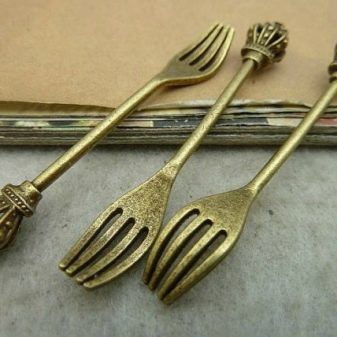

Types of table forks
Today, forks are included in standard table setting sets and are an integral part of them. There is a huge amount of materials from which this cutlery is made - silver, stainless steel, wood, cupronickel and so on. Among the variety of forks, there are several standard types, depending on the purpose.
- Canteen. Purpose - hot main courses, appliance length - 20-22 cm. Consists of a handle and 4 teeth.

- Fish fork. Appointment - hot fish dishes, device length - 16-18 cm. Consists of a handle with 4 shortened teeth. The appearance may vary slightly (depending on the type of fish). Its subspecies is a 3-toothed fork (chill fork), intended for fish snacks.
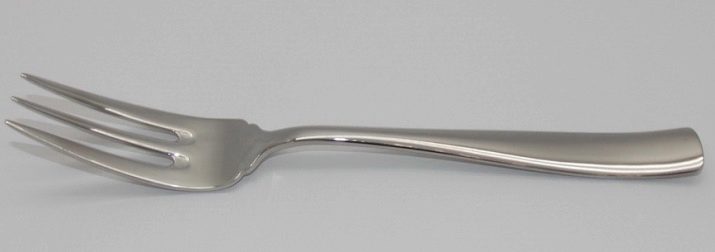
- Diner. Purpose - cold dishes and individual hot snacks, the length of the device is 18-19 cm. The handle consists of 4 elongated teeth, very similar to the dining room, only smaller.
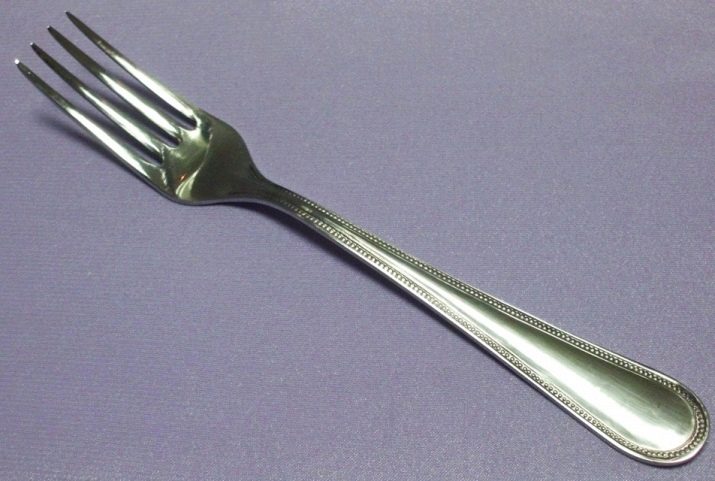
- Dessert. Purpose - various desserts (pies, casseroles, cottage cheese). The length of the device is 14-16 cm. It consists of a handle and 3 teeth.
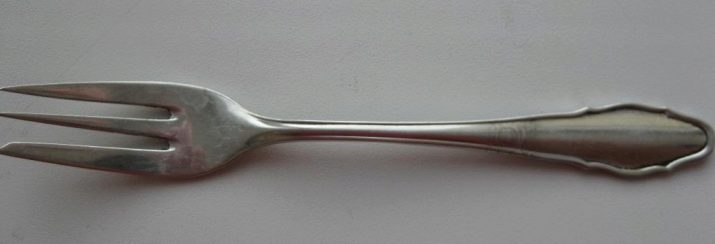
- For confectionery. Appointment - cakes, biscuits, pastries. The length of the device is 12-15 cm. The handle consists of 3 teeth, the outermost of which is slightly beveled. There are separate devices for left-handers and right-handers.
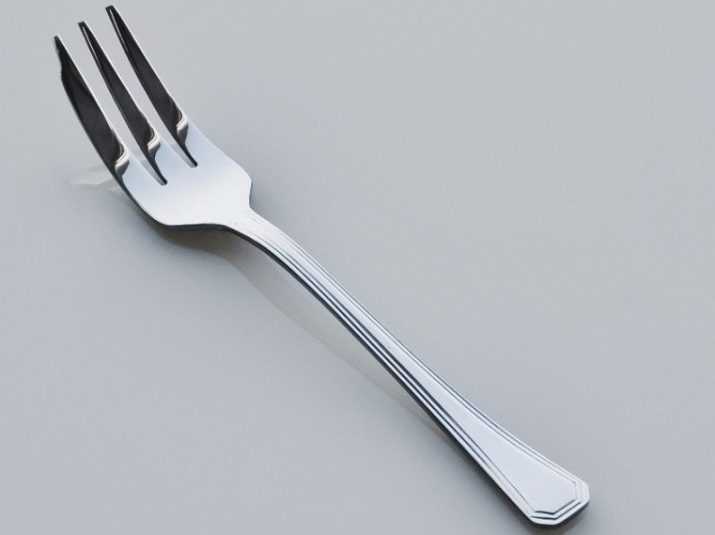
- For fruit. Purpose - various sliced fruits and fruit salads. Length - 12-14 cm. It can consist of either 2 or 3 teeth.
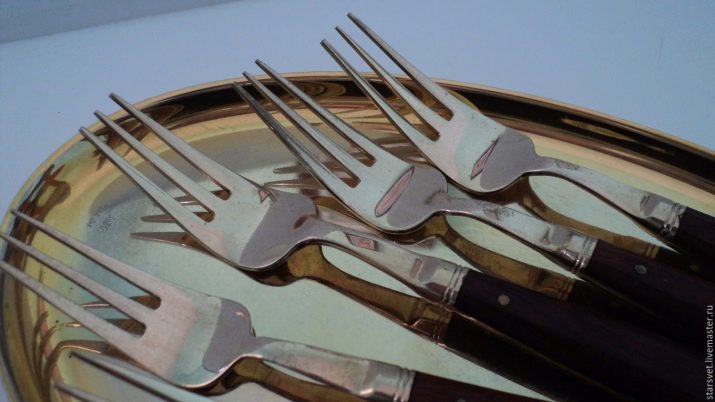
All types of forks have approximately the same structure, only slightly differing from each other in the size, number and shape of the teeth. Another criterion is the material from which they are made. The elite set of forks consists of silver and gold pieces. Their handles can be finished with decorative carvings and precious stones.
A more economical, but no less high-quality material is stainless steel. Such table forks will serve their owners for more than a dozen years. There are, for example, children's sets that differ only in the small sizes of the devices. In them, the handles of the forks can be decorated in the form of animals, birds, fruits, vegetables.


Cleaning forks at home
The cleanliness of cutlery is an indicator of what kind of hostess operates in the house. Anyone can enjoy eating using polished forks and spoons. Keeping the kitchen clean is a guarantee of good health, as well as the quality of the material from which kitchen utensils are made, including cutlery. Therefore, when choosing devices it is necessary to give preference only to high-quality alloys, since food can enter our body with various chemicals contained in the composition of the dishes.
Some of the best cutlery are those made of stainless steel and silver.
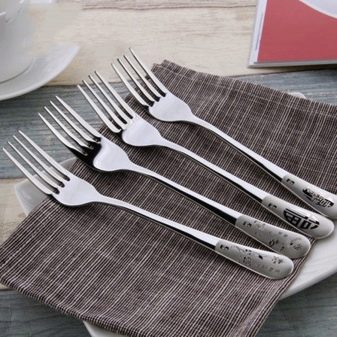

There are many different ways to clean your stainless steel table forks at home. Among the popular methods, the following options are the most popular.
- The use of soda, chalk, and also the sediment of brewed coffee will be effective against plaque.
- Add two tablespoons of soda and salt to a pot of water, after they are completely dissolved, immerse the cutlery in water. We keep the forks in the water for 20 minutes. Then we pour out the water and rinse the devices well.
- Lemon juice will help get rid of any stains on the surface of the forks.
- To restore the shine of the table forks, you can grate them well with raw potatoes.


Cutlery made from silver also requires regular maintenance. Many have noticed that the silver forks begin to darken over time. To avoid this, it is necessary to minimize the contact of silver devices with air. They should be stored in a special bag or box in which the devices are most often sold. If there is no such box, the forks must be tightly wrapped with cling film.
Among the various descriptions of tips for caring for silverware the most effective is brushing with tooth powder. If it was not found in the house, then toothpaste can serve as a substitute. Any of the means is applied to a sponge or rag and rubbed over the devices. You can also use chalk.

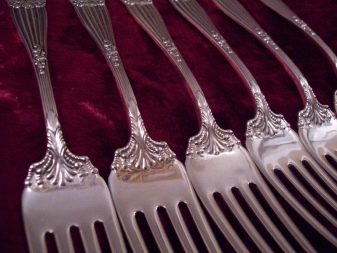
For those who do not want to waste time and effort rubbing the devices, you can prepare a simple solution. To do this, we take soapy water and ammonia (1 liter of water = 1 spoonful of alcohol). Then we put silver forks and spoons there, and after 20-30 minutes we take them out, after which we thoroughly rinse in cold water and wipe dry with a soft towel.
To clean the silver forks, you can use a solution of salt, baking soda and water (1 tablespoon of baking soda and 1 tablespoon of salt in 0.25 liters of water). Bring the solution to a boil and put the forks there, after which we boil them for 10-15 minutes and rinse well under running water.
Note: Coca-Cola not only actively fights against rust and scale, but also against dark bloom on silver.


Any of these methods will help you keep your cutlery clean. Which one to choose is up to you.
For information on how to clean stainless steel plugs, see the next video.


